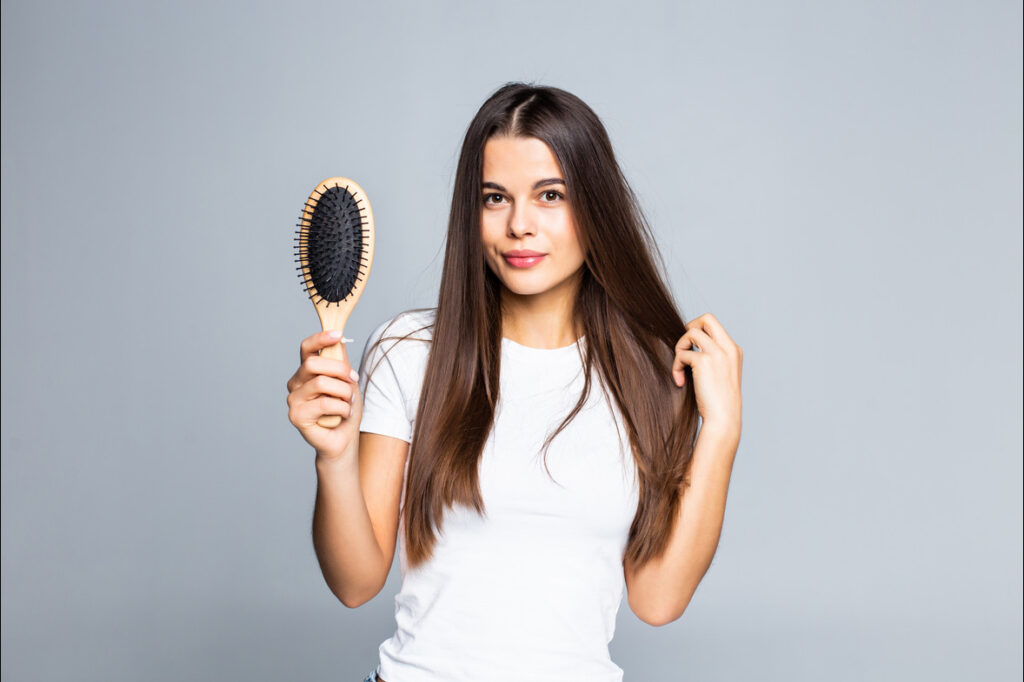Having thick, luscious, and healthy hair is a common desire for many Indians. With our diverse hair types, ranging from straight to wavy, curly, and tightly coiled, it’s essential to tailor our hair care routines to meet the specific needs of Indian hair. Factors such as pollution, humidity, and the use of traditional oils make Indian hair care unique. In this blog, we’ll discuss a daily hair care routine that can help you maintain and enhance the beauty of your Indian hair.
Understanding Indian Hair
Before diving into the daily hair care routine, it’s crucial to understand the unique characteristics of Indian hair. Indian hair types are often categorized into three main categories: straight, wavy, and curly. Each of these hair types requires slightly different care, but they share some common challenges due to the hot and humid climate prevalent in most parts of India.
Common Hair Challenges for Indians:
Hair Fall: Hair fall is a common issue faced by many Indians due to factors like pollution, hard water, and nutritional deficiencies.
Frizz and Dryness: The humidity in India can lead to frizz and dryness, especially for those with curly or wavy hair.
Dandruff: The hot and humid climate can exacerbate dandruff issues.
Oiliness: Some people may have oily scalps, which can lead to greasy hair.
Daily Hair Care Routine
- Choosing the Right Shampoo and Conditioner:
- The foundation of any hair care routine is the choice of shampoo and conditioner. For Indian hair, it’s essential to select products that are mild and sulfate-free. Sulfates are harsh cleansing agents that can strip away natural oils from your hair, leaving it dry and brittle. Look for shampoos and conditioners that are formulated to suit your specific hair type, whether it’s straight, wavy, or curly.
- Water Temperature Matters:
- The temperature of the water you use to wash your hair can significantly impact its health. Hot water can open up the hair cuticles excessively, leading to loss of moisture and shine. Lukewarm or cool water is a better choice as it helps in retaining natural oils and keeps the cuticles closed, resulting in smoother and shinier hair.
- Gentle Cleansing:
- When applying shampoo, focus on your scalp. Gently massage it with your fingertips to lift dirt, oil, and product residue. Avoid using your nails or scrubbing too vigorously, as this can damage the scalp and lead to hair breakage. The massaging action also helps improve blood circulation to the scalp, promoting hair growth.
- Condition with Care:
- Conditioner should be applied mainly to the lengths and ends of your hair. These are the oldest and most fragile parts of your hair and benefit the most from conditioning. Avoid applying conditioner directly to your scalp, as it can make your hair look greasy. When you do this correctly, it helps in detangling your hair, making it easier to manage and reducing the risk of breakage during brushing or combing.
- Rinse Thoroughly:
- After shampooing and conditioning, make sure to rinse your hair thoroughly. Any residue left behind can make your hair look dull and weighed down. Rinse until you feel your hair is squeaky clean. Proper rinsing also prevents product buildup on your scalp, which can lead to issues like dandruff and an itchy scalp.
- Towel Drying:
- After rinsing your hair, it’s crucial to be gentle when drying it. Instead of vigorously rubbing your hair with a towel, which can cause friction and lead to breakage, gently pat your hair dry. Use a soft, absorbent towel to remove excess water. Be careful not to wring or twist your hair, as wet hair is more fragile and prone to damage.
- Combing:
- Choose a wide-toothed comb or a detangling brush to comb your hair. Start combing from the tips and gradually work your way up towards the roots. This approach helps prevent hair breakage, especially if you have curly or wavy hair prone to tangling. Be patient and gentle when detangling to avoid unnecessary stress on your hair.
- Serum or Leave-In Conditioner:
- After towel-drying and detangling your hair, consider applying a small amount of hair serum or leave-in conditioner. These products help control frizz, add shine, and provide extra moisture. Depending on your hair type and specific needs, you can choose a product that suits you best. Apply it evenly throughout your hair, focusing on the ends, where hair tends to be drier.
- Protect from Pollution:
- Pollution, dust, and UV rays can all take a toll on your hair’s health and appearance. When heading outdoors, especially in polluted urban areas, consider covering your hair with a scarf or hat. This simple step can help shield your hair from environmental damage and preserve its natural beauty.
- Avoid Excessive Heat Styling:
- Limit the use of heat styling tools like hair straighteners, curling irons, and blow dryers. Excessive heat can damage the hair shaft, leading to dryness, breakage, and loss of natural luster. If you must use heat styling tools, apply a heat protectant product beforehand to minimize damage, and always use them on the lowest heat settings that achieve the desired style.
Maintaining a daily hair care routine tailored to Indian hair types is essential for achieving and maintaining gorgeous, healthy locks. By following these tips and paying attention to the unique needs of your hair, you can ensure that your Indian hair remains strong, vibrant, and resilient against the challenges posed by climate, pollution, and lifestyle factors. Remember that consistency is key, and with time and care, you can achieve the hair you’ve always dreamed of.

